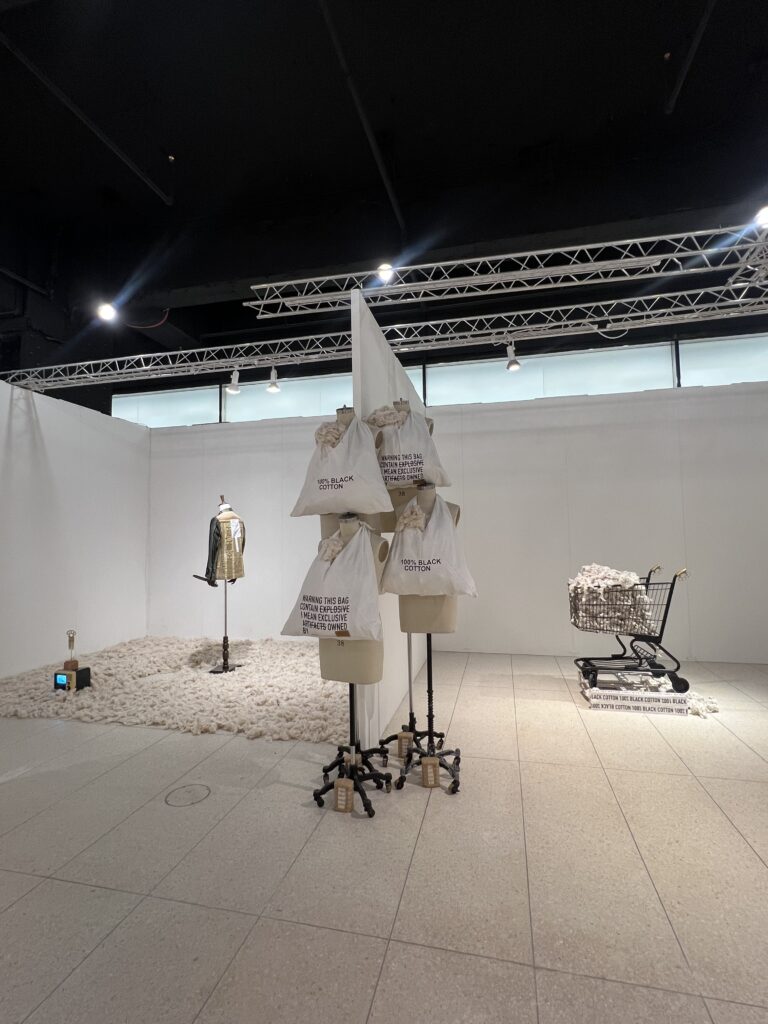
The 2025 Met Gala may have come to a close, but the conversation it sparked around Tailoring Black Style is far from over. In fact, it feels less like an ending and more like a new beginning—an extension of a dialogue that continues to reshape how we perceive style, identity, and heritage.
As history has shown us, fashion breeds art just as art breathes new life into fashion. Together, they form a powerful loop of cultural expression. The 1-54 Contemporary African Art Fair’s 2025 New York edition features a compelling installation titled Textile Language by the creative collective Art Comes First. The installation explores the communicative power of textiles in African and diasporic cultures, emphasizing how fabric and fashion serve as mediums for storytelling and tracing century-long histories of cotton farming.
In this extended chapter of our Threads of Influence series, Guzangs spotlights this Textile Language installation at the the 2025 New York’s 1-54 Contemporary African Art Fair and in alignment with the just concluded Met Gala to further highlight the enduring significance of sartorial expression in conveying cultural narratives and ensuring that this dialogue finds fertile ground beyond the red carpet, and in galleries, studios, and textile workshops where stories continue to unfold, stitch by stitch.
A Centerpiece Garment Dedicated to Tailoring Black Style
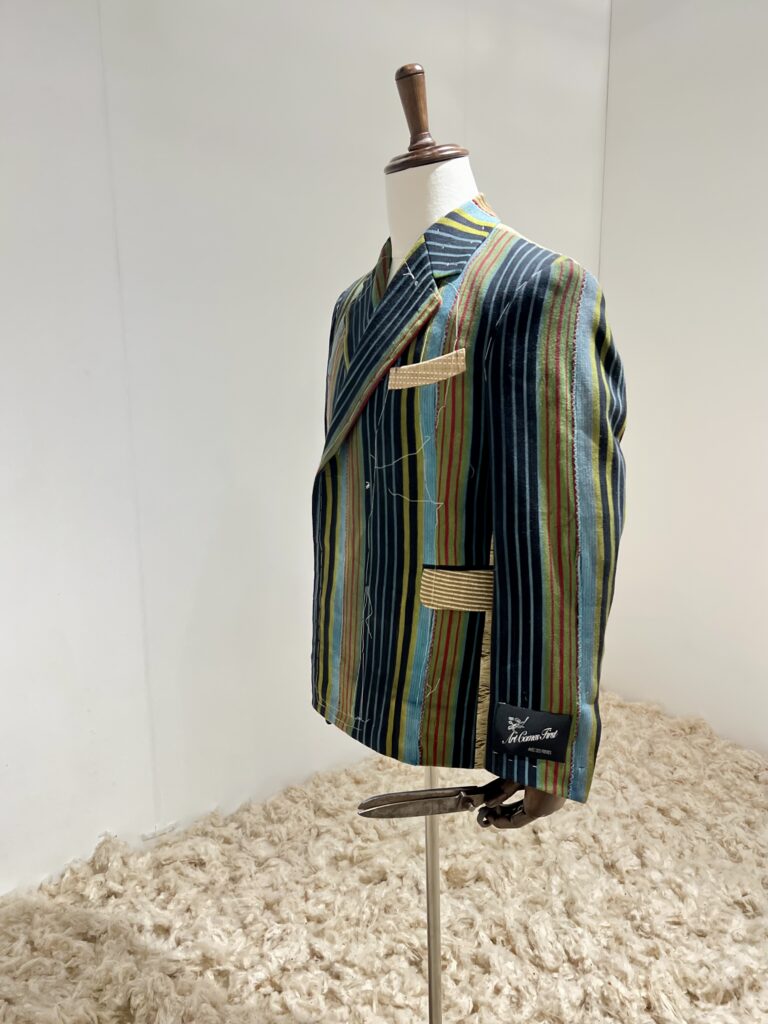
In the middle of the installation, stands a well- tailored jacket which was crafted from 100% Egyptian cotton, embroidered with raffia threads by artisans in Senegal, and tailored in Japan. The jacket was also intricately adorned with Afro comb motifs which mirrors the Met Gala 2025’s theme on Tailoring Black Style.
Egyptian cotton has been a material long associated with excellence, especially when tracing African fabric origin, a quality choice by the Art Comes First collective. Meanwhile, the Afro comb—once a utilitarian object and now a potent cultural symbol – is recognized as both embellishment and message. In a preview statement by the ACF, the room which features the installation is defined as a dialogue between silence and sound, roots and materials. This synergy between textile heritage and modern design echoes the Met Gala’s deeper narrative: that Black tailoring is not merely about fit and form, but about fashion as resistance, craftsmanship as storytelling, and identity as something both worn and woven. Much like the red carpet looks that reimagined zoot suits, wide-legged pants, and Harlem Renaissance silhouettes, ACF’s well- tailored jacket installation sees tailoring as a political language.
Textile as a Tool for Advocacy
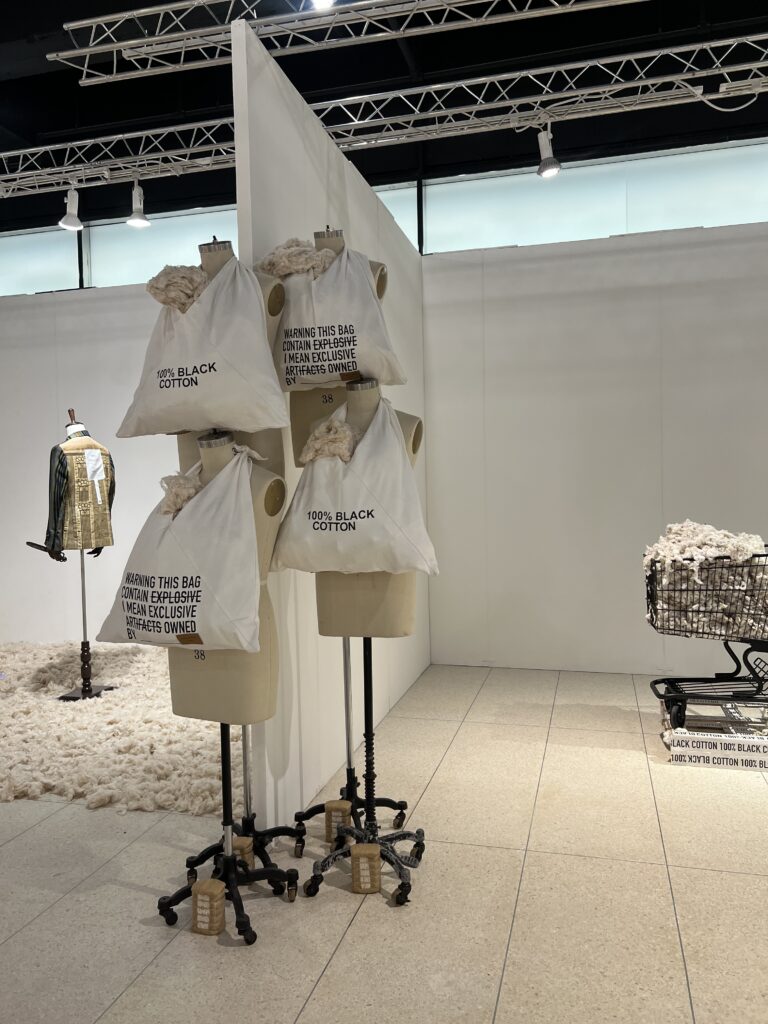
The ACF understands that textile can also be a weapon, and it’s how black style has been wielded for centuries. It was never always about looking good but being seen enough to matter, to have a voice, to break the boundaries. In our Threads of Influence, we trace this truth using cultural reverence, documenting how black sartorial expression has evolved from pre-colonial African kingdoms through the disruptions of colonization and into the language of resistance that defines much of today’s fashion.
In Textile Language, this conversation takes on an immersive, tactile form, tracing the origin of black cotton. The project gives us a perspective in a cart full of cotton fields of ancient Meroë to the indigo-dyed caves of Mali and a post-reconstruction black-owned cotton farm in Alabama, ACF threads the past into the present, using symbols like the Afro comb to articulate a new form of cultural storytelling. It is an active, political medium to note that the story of Black style is one of constant negotiation and one that further threads into the future.
Rebellion Against Black Labor
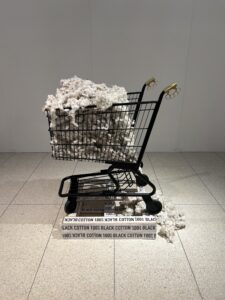
In Booth 18 titled Black Super Market, a black shopping cart is elevated on a platform and filled with raw cotton. The cart is fitted with ACF’s signature brass knuckle handle—a fusion of rebellion and craftsmanship. It stands at once as a modern consumer artifact and a haunting historical echo, bridging the cotton baskets of enslaved laborers with today’s global marketplaces. It confronts the legacy of exploited Black labor that built global textile economies, yet received little recognition or ownership in return. This symbolic gesture directly aligns with what we have done with Threads of Influence, which charts how African fashion—once devalued under colonial rule—has become a means of resistance and cultural continuity, even as we make traces of the Sapeurs of Congo and how their tailored rebellion leads the front of African fashion evolution, even when they are not credited enough. Both works critique the same system: one that reduced black bodies to labor and black textiles to trade.
The Blues: A Poetry Of Combs And Cotton
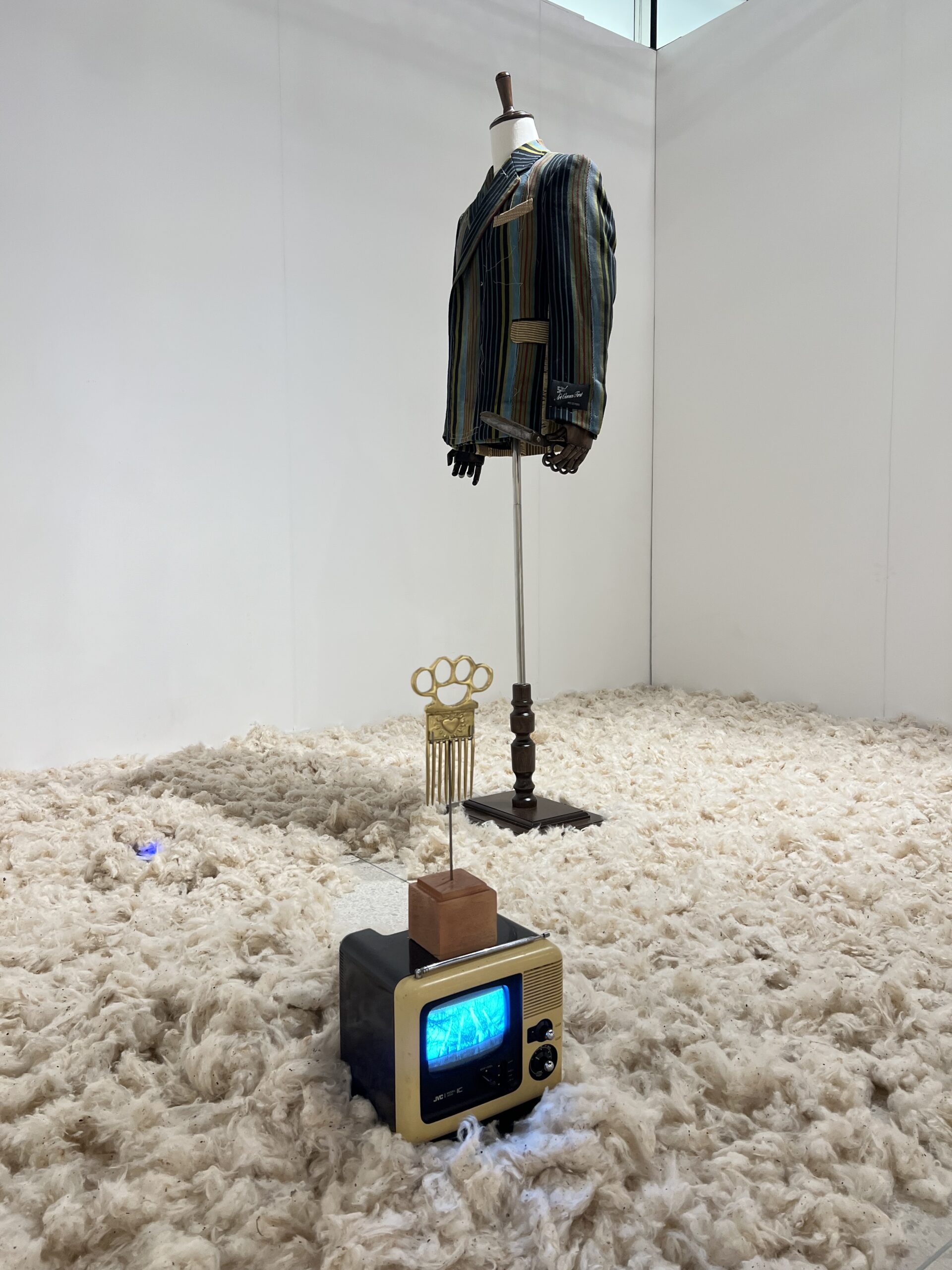
Set at the entrance, a vintage television rests close to the floor, continuously playing The Blues—a visual poetry film shot in Ethiopia that unpacks the layered symbolism of the comb and cotton. Voiced and written by Saul Williams, the film unfolds in a contemplative rhythm, weaving sound and image into a meditative tapestry of grief, beauty, lineage, and endurance. In its prologue, cotton appears as fiber—as a raw, organic material bearing the weight of centuries. It evokes the fields of ancient Meroë, the indigo pits of West Africa, and the soft hands that spun threads for both ceremony and survival. But The Blues quickly shifts into darker terrain, echoing the violence of colonial exploitation. Cotton becomes a symbol of forced labor, extraction, and loss. The film depicts brutality, letting the silence of the fields and the solemnity of Williams’ poetry speak to what was taken. The comb, once a utilitarian tool for processing cotton fibers before weaving, becomes emblematic of both fragmentation and continuity. Forged now in brass by artisans in Ivory Coast and resting as a sculptural totem on a low-set television, the comb becomes a testimony. It reminds us of the Black hands that once bent over cotton bushes in servitude, and the ancestral knowledge that colonial systems tried—and failed—to erase.
Williams’ voice glides over haunting visuals like a thread through cloth, offering a “sonic weave” of grief, memory, and endurance. His poetry doesn’t seek resolution—it seeks recognition. It asks us to remember what cotton cost, and what the comb once carried. Yet The Blues does not end in mourning. It gestures, quietly but firmly, toward reclamation. Together, these objects trace a path from utility to exploitation, and finally to celebration. Through them, it honors the artistry and labor of the past while illuminating the creative sovereignty of the present.